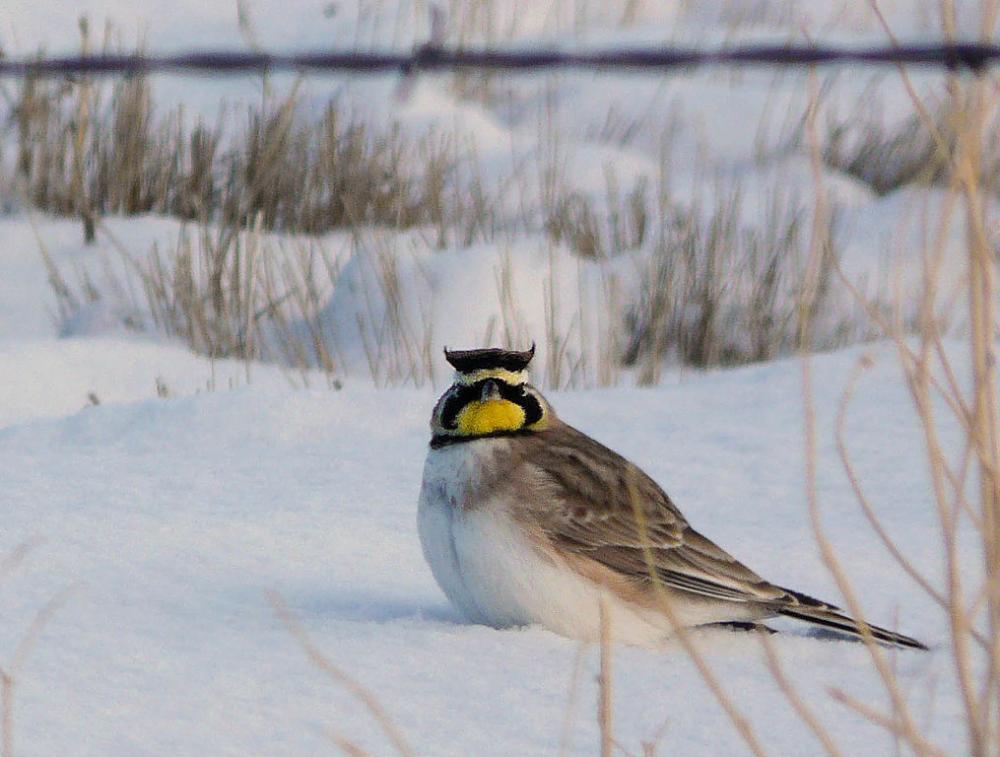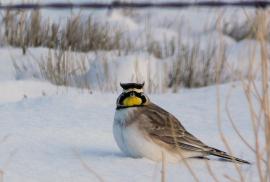Guide to Boreal Birds
Overview
The Horned Lark, which walks or runs instead of hopping, moves in an erratic pattern when feeding. On its breeding territory and when in flocks during winter, it feeds on seeds and ground insects. The only true lark native to the New World, this is one of our earliest nesting birds. Even in the northern states, nests may be found in February, when the first set of eggs is often destroyed by severe snowstorms. As many as three broods are raised each year. This bird is philopatric, or faithful to its birthplace, where it returns after every migration. Consequently, each local population adapts to the color of its habitat; 15 distinct subspecies have been described in the West.
Description
7-8" (18-20 cm). Larger than a sparrow. Brown, with black stripe below eye and white or yellowish stripe above, black crescent on breast, and black "horns" (not always seen). Walks rather than hops. In flight, tail is black with white edges. Similar-looking pipits have brown tails and lack face pattern.
Voice
A soft ti-ti. Song delivered in flight is a high-pitched series of tinkling notes.
Nesting
3-5 brown-spotted gray eggs in a hollow in the ground lined with fine grass.
Habitat
Plains, fields, airports, and beaches.
Range/Migration
Breeds in Alaska and Canadian Arctic, coastal Canada, and south throughout all of United States except Southeast. Winters from southern Canada southward. Also in Old World.



